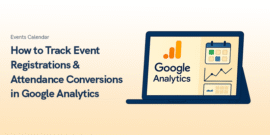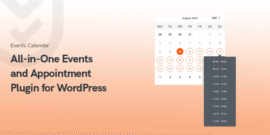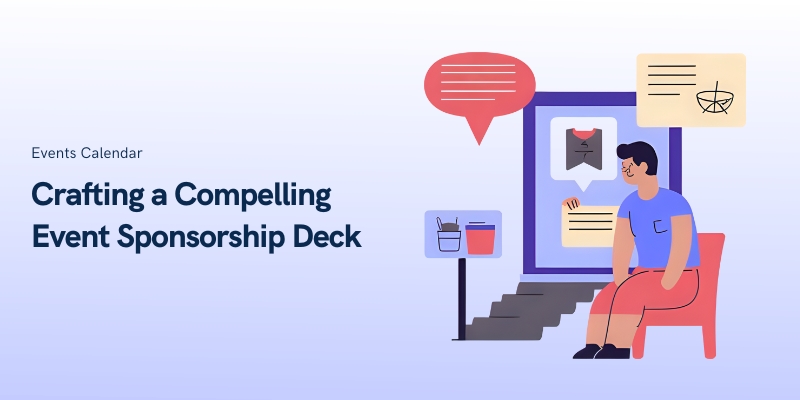
Crafting a Compelling Event Sponsorship Deck in 2025
Sponsors not only provide financial backing but also amplify your event’s reach and credibility through their networks.
At the heart of this process lies the event sponsorship deck, a dynamic tool that bridges your vision with a sponsor’s goals.
This deck is more than a pitch; it’s a strategic narrative that highlights your event’s unique value, aligns with a sponsor’s event marketing strategy, and quantifies the sponsor benefits they’ll gain.
Now let’s understand this strategic narrative a bit better.
Understanding the Purpose of a Sponsorship Deck
A sponsorship deck is a visual proposal designed to persuade brands to invest in your event.
Its primary role in event planning is to articulate how a partnership will deliver measurable returns, whether through brand exposure, audience engagement, or lead generation.
A compelling deck aligns your event’s objectives with the sponsor’s event marketing strategy to create a symbiotic relationship.
For example, if your event targets eco-conscious millennials, the deck should emphasize how a sponsor’s sustainability-focused products will resonate with this audience.
By clearly mapping sponsor benefits, such as logo placement, speaking opportunities, or experiential activations, the deck positions your event as a catalyst for achieving the sponsor’s business goals.
But what shall we include in our sponsorship deck?
Essential Components of a Compelling Sponsorship Deck
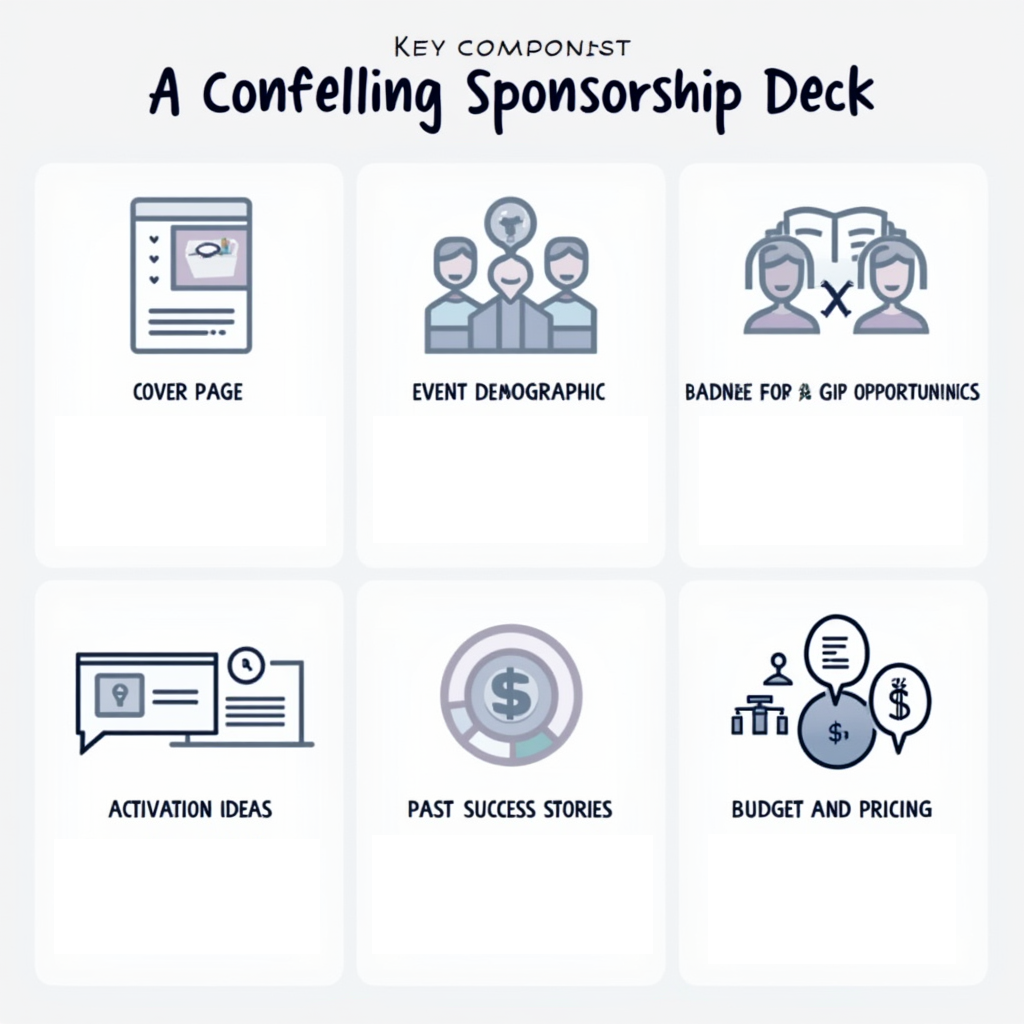
Here we have included the most important components of a successful presentation.
Cover Page
The cover page is your event sponsorship deck’s first impression, a visual handshake that sets the tone.
Think bold typography, immersive graphics, or even animated elements for digital decks.
For example, a sustainability summit might use dynamic green hues and imagery of renewable technology.
A polished cover page signals that your event planning team is detail-oriented and invested in delivering value.
Event Overview
This section grounds sponsors in your event’s purpose and scope.
Begin with a concise mission statement: “Empowering women in STEM through networking and skill-building.”
Highlight key logistics, dates, venue, expected attendance, and tie them to sponsor benefits.
Explain how your event aligns with broader trends or causes, such as leveraging AI advancements—an area covered in 10 Best AI Tools for Event Planners & Businesses in 2025.
This contextualizes your event marketing strategy and positions sponsors as partners in a meaningful movement, not just financial backers.
Audience Demographics
Sponsors invest in audiences, not events. Use granular data to showcase your attendees’ age, profession, income brackets, and interests.
For example, “40% actively seek sustainable brands.”
Visual aids like infographics or heat maps can illustrate geographic reach.
This section must prove alignment between your audience and the sponsor’s target market, making the sponsorship package a strategic extension of their marketing funnel.
Sponsorship Opportunities
Break down tiered sponsorship packages (Platinum, Gold, Silver) with escalating benefits.
Platinum might include a keynote speaking slot, logo placement on all digital assets, and a VIP lounge, while Silver offers social media mentions and booth space.
Tailor each tier to different budgets and event marketing strategy goals.
For example, a startup might prioritize lead generation via a sponsored workshop, while a legacy brand seeks prestige through title sponsorship.
Highlight exclusivity (e.g., “Only one Platinum partner”) to drive urgency.
Use clear icons or tables to compare tiers, ensuring sponsors quickly grasp their options.
Activation Ideas
Move beyond static logos with innovative activations that immerse sponsors in the attendee experience.
Propose interactive elements like AR-powered product demos, live polls displayed on mainstage screens, or co-branded content hubs.
For a health and wellness expo, a sponsor could host a mindfulness zone with free samples and guided sessions.
Emphasize how these ideas align with 2025 trends, personalization, tech integration, and sustainability.
Show mock-ups or case studies of similar activations to illustrate potential impact.
This section transforms your event sponsorship deck from a pitch into a collaborative blueprint.
Past Success Stories
Credibility is currency; share metrics from previous sponsors, such as “Brand X saw a 200% increase in social media engagement” or “500 leads generated in 48 hours.”
Include testimonials: “Partnering with this event expanded our reach to untapped markets,” says Jane Doe, CMO of TechCorp.
If you’re a new event, highlight the team’s track record or comparable milestones from past projects.
This reassures sponsors that your event planning expertise translates to tangible outcomes, reducing perceived risk.
Budget and Pricing
Transparency builds trust. Clearly outline costs and deliverables, avoiding vague terms like “brand exposure.”
Offer flexible payment plans or early-bird discounts to accommodate different budgets.
In 2025, sponsors expect dynamic pricing models; consider add-ons like post-event analytics reports or NFT-based swag for premium tiers.
Call to Action
End with a clear, urgent next step. Provide a deadline (“Secure Platinum status by October 1st”) and direct contact details
For digital decks, embed clickable buttons (“Schedule a Call”) or QR codes linking to a sponsorship portal.
Reinforce the value: “Join 50+ industry leaders and connect with 5,000+ professionals.”
A strong CTA transforms interest into action, closing your event sponsorship deck with momentum.
Now let’s talk design!
Designing an Engaging Sponsorship Deck

Crafting a visually compelling event sponsorship deck requires intentional design choices that amplify your message.
Start with visual consistency—align colors, fonts, and layouts with your event’s branding to reinforce professionalism.
For example, a fintech conference might use metallic accents and minimalist design to mirror innovation.
Consistency isn’t just aesthetic; it builds trust, ensuring sponsors perceive your sponsorship proposal as cohesive and credible.
Next, prioritize compelling imagery.
High-resolution photos of past events, mock-ups of sponsor activations, or infographics illustrating audience demographics can transform abstract ideas into tangible sponsor benefits.
For a music festival, vibrant crowd shots and stage visuals convey energy, while a corporate summit might spotlight sleek venue shots. Avoid generic stock images; authenticity resonates.
Finally, embrace concise content.
Sponsors skim decks quickly, so distill information into digestible snippets.
Use bullet points sparingly, opting for punchy headers like “5,000 Industry Leaders Await Your Brand” or “Global Reach, Local Impact.”
Pair text with visuals—e.g., overlay a sponsor’s logo on a venue map to show placement opportunities.
Clarity is key; every element should answer “What’s in it for them?”
Leveraging Modern Events Calendar (MEC) for Sponsorship Success
Modern tools like Modern Events Calendar (MEC) are revolutionizing event planning and sponsorship outreach.
Begin with professional event presentation: MEC’s templates let you design sleek, mobile-friendly events to highlight sponsors.
Dedicated features like the Sponsor Module let you showcase sponsors in your single event pages.
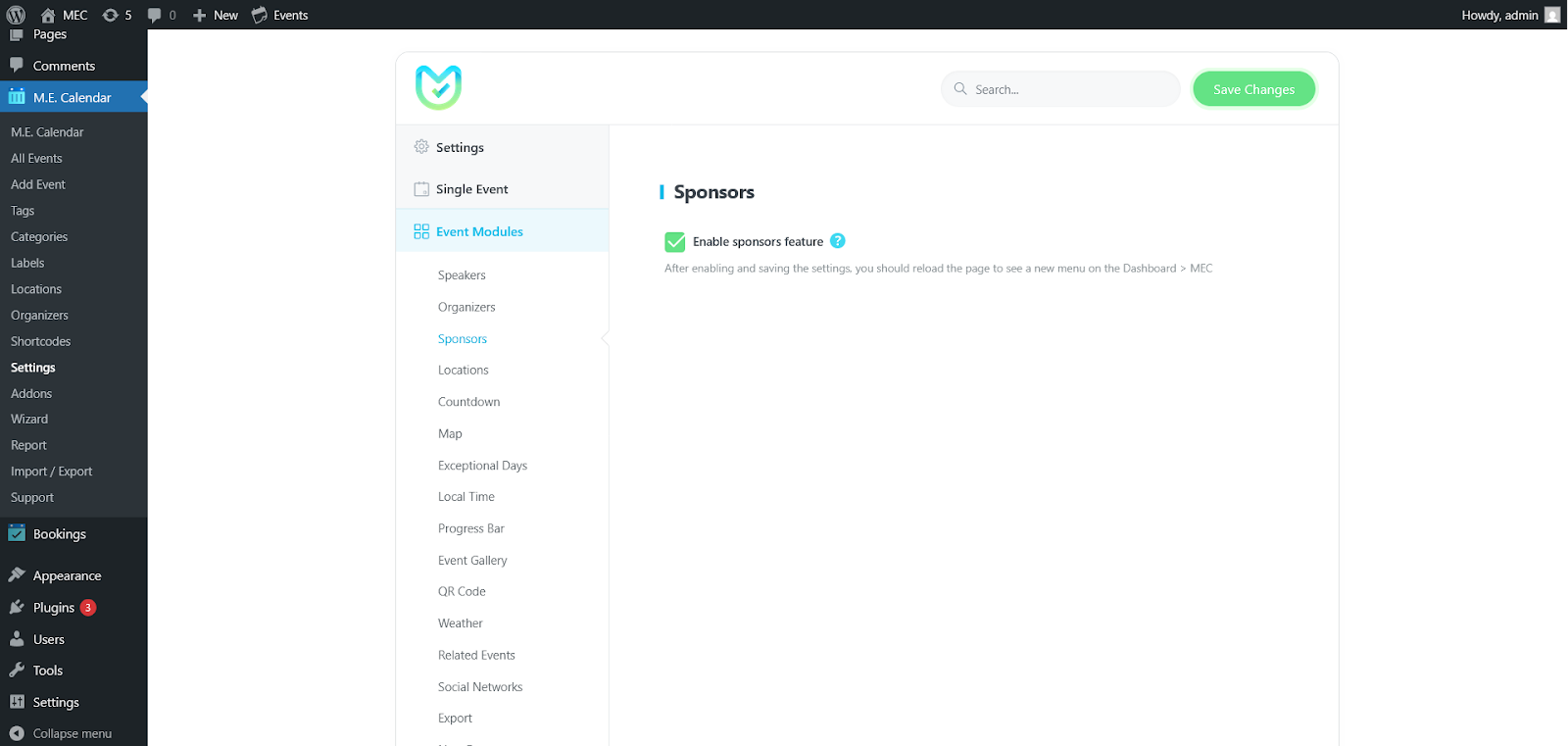
You can also include event sponsors in your Event Banner as a featured spot to ensure better visibility for them.
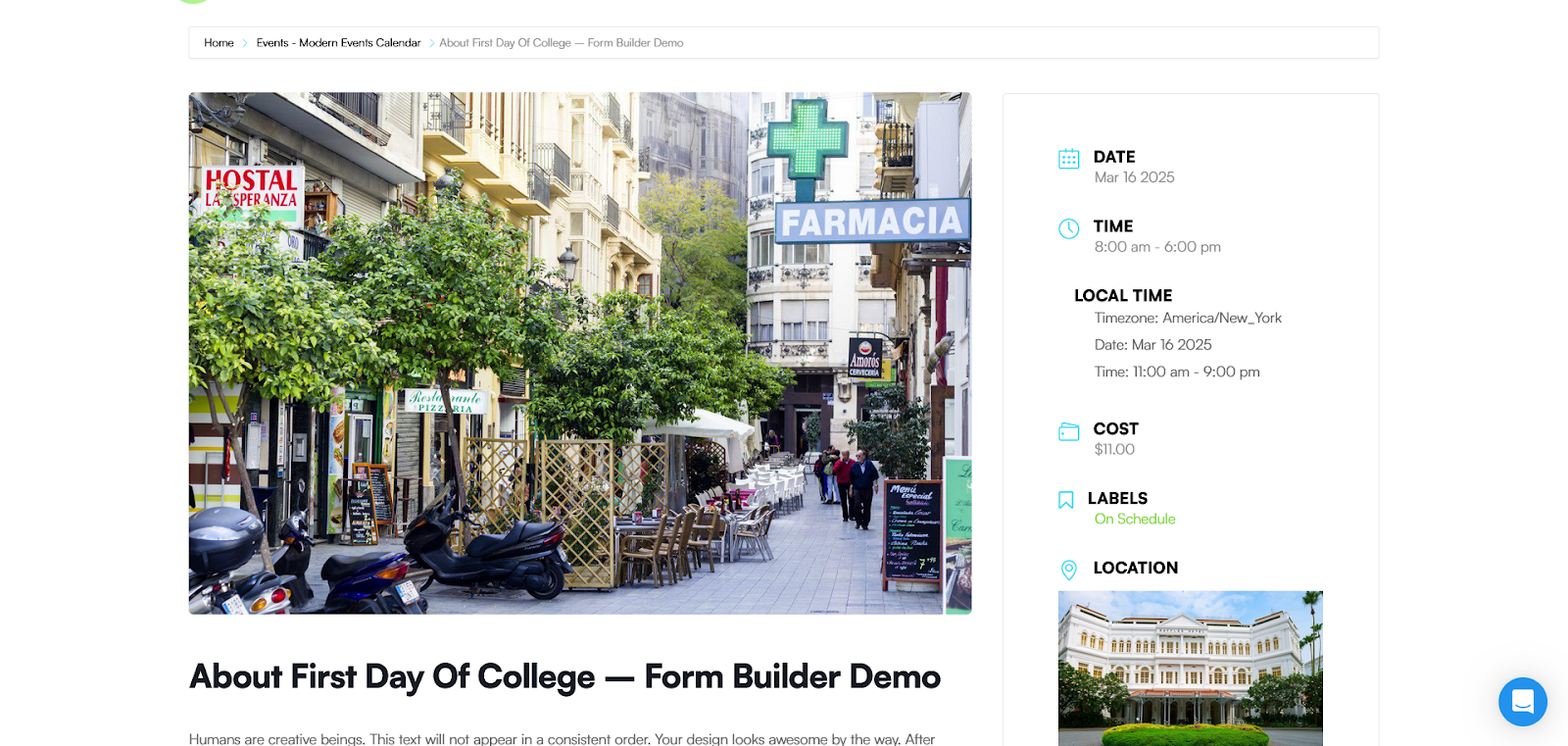
MEC also excels in comprehensive event management.
Its integrated tools handle ticketing, attendee tracking, and analytics, which you can highlight in your deck to reassure sponsors of seamless execution.
For instance, mention how real-time data from MEC will provide sponsors with engagement metrics, linking their investment directly to outcomes.
This is especially valuable when trying to measure your event’s success with confidence.
Lastly, leverage MEC’s enhanced visibility tools.
Its social media integrations boost your event’s online presence, a selling point for sponsors seeking broad exposure.

Example: “Your brand will appear in 10,000+ monthly searches through our MEC-optimized listings.”
This synergy between event marketing strategy and technology positions your sponsorship offering as both modern and results-driven.
Best Practices for Presenting Your Sponsorship Deck
A polished sponsorship proposal demands more than a “send and pray” approach. Start with a tailored approach:
Research each sponsor’s campaigns, values, and pain points.
Customize the deck to reflect their goals—e.g., “Your sustainability focus aligns with our zero-waste initiative” —and adjust sponsorship packages to match their budget and KPIs.
Next, master storytelling.
Frame your event as a narrative—share its origin story, testimonials from past attendees, or a vision for future growth.
For example, “Last year, our summit connected 500 startups with investors; in 2025, we’ll double that impact—with your brand at the center.
Stories humanize data, making sponsor benefits relatable.
Finally, implement a strategic follow-up plan.
After sharing the deck, schedule a call to address questions and refine the pitch based on feedback.
Persistence paired with professionalism turns tentative interest into committed partnerships.
Conclusion
In 2025, a standout event sponsorship deck will remain the linchpin of successful event planning.
By blending data, creativity, and strategic design, you can craft a proposal that not only secures sponsorships but also fosters long-term partnerships.
Prioritize clarity, customization, and ROI-driven storytelling to transform your sponsorship package into an irresistible opportunity.
The future of events belongs to those who prepare—start refining your deck today using tools like the best WordPress events calendar plugins for streamlined success.

